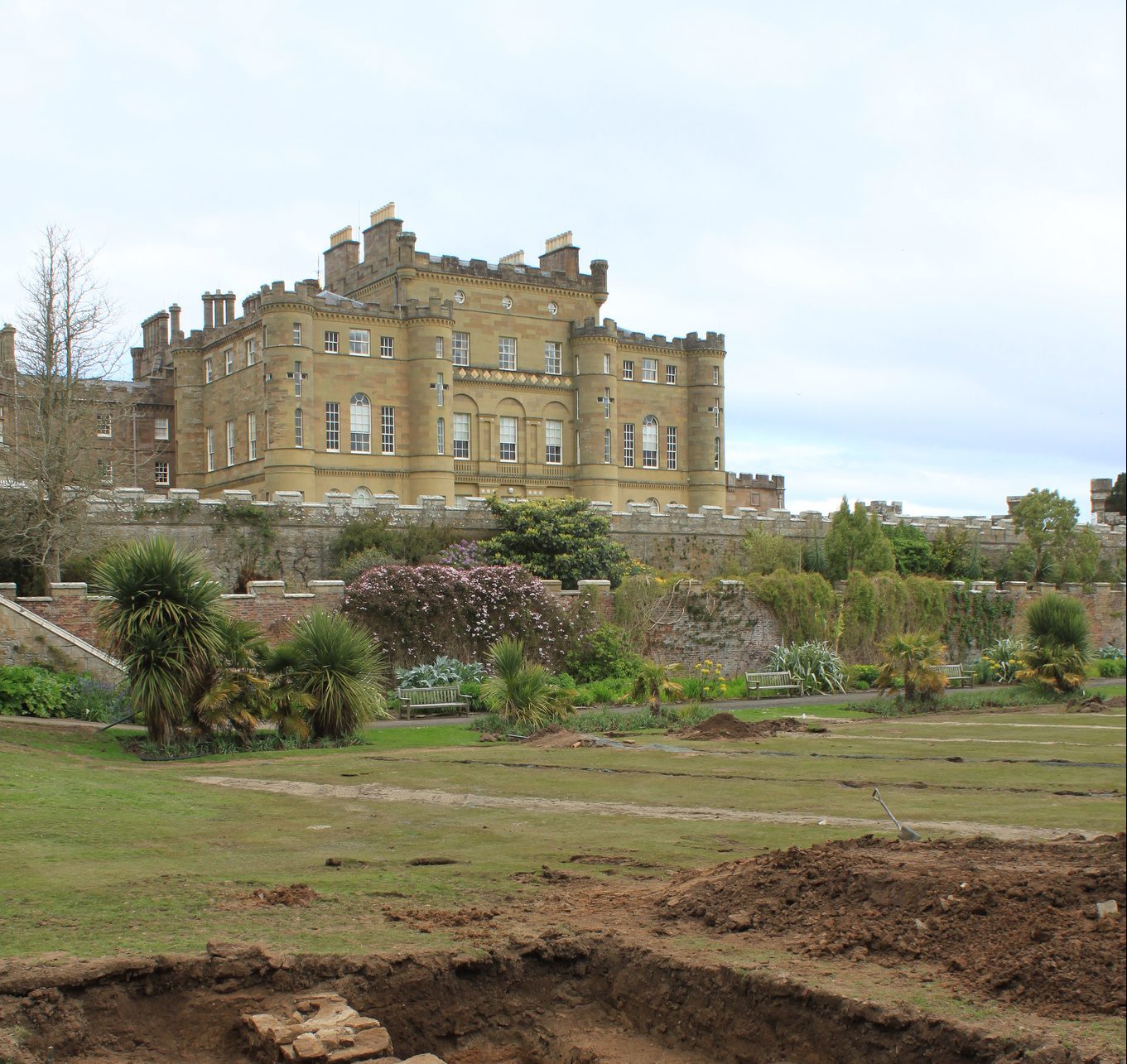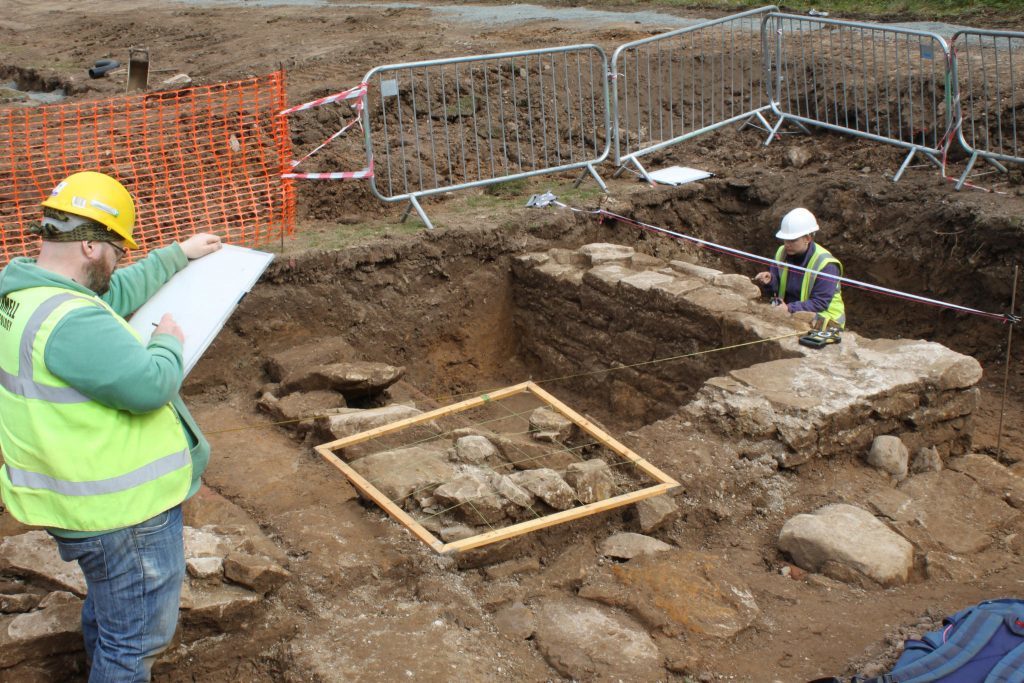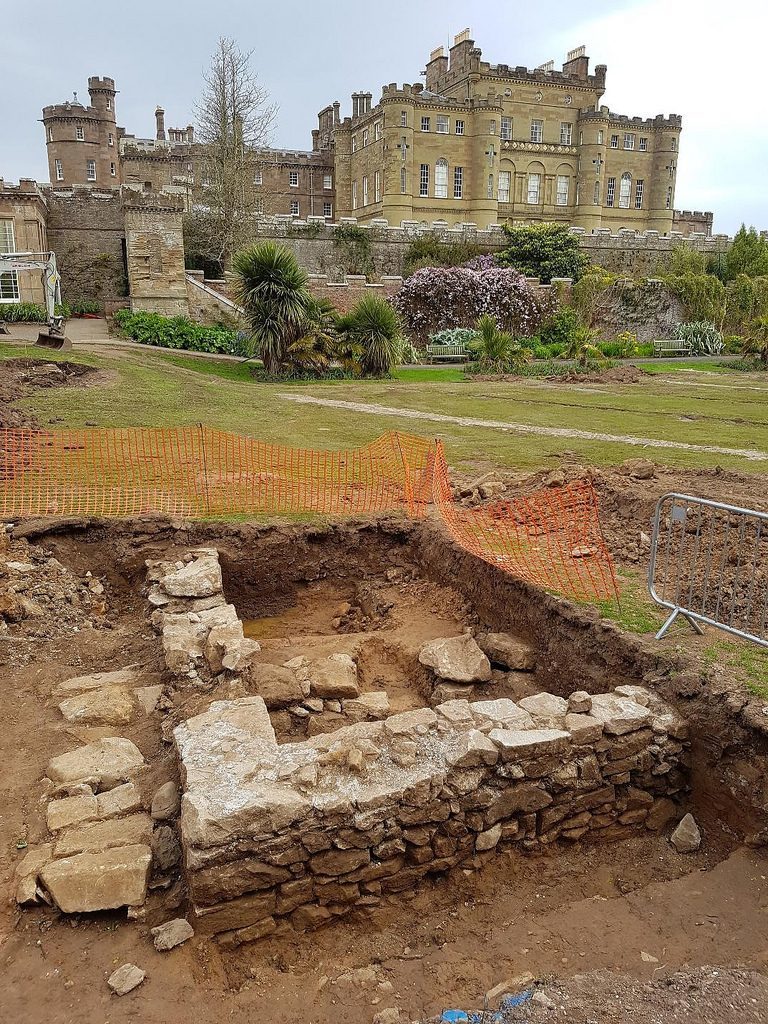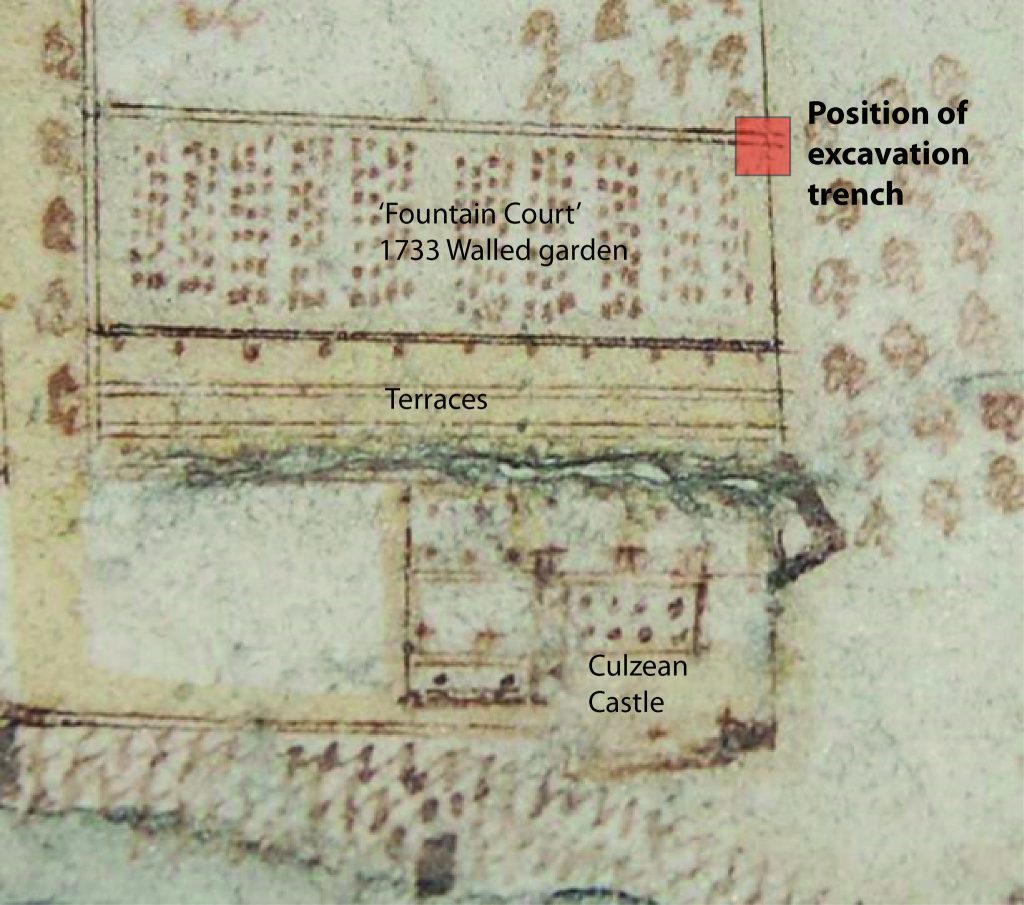
ARCHAEOLOGISTS have discovered the remains of an 18th century walled garden buried below the Fountain Court in front of Ayrshire’s Culzean Castle.
The discovery was made by a National Trust for Scotland excavation team as part of a major project to improve the drainage at the Fountain Court and to make it suitable for staging large public events.
Stone walls were located, forming a large rectangular enclosure over 60m long by 30m. Careful excavation and cleaning revealed that the wall at this point survives to over six courses, standing around 0.7m high.
This garden wall is thought to result from work undertaken by Sir John Kennedy of Culzean, 2nd Baronet, in 1733 when he extended the walled garden at the foot of the terrace walls on the east side of the castle. This garden is shown on the estate map of Culzean drawn by John Foulis in 1755.
Derek Alexander, Head of Archaeological Services for the NTS said: “It is so exciting to see part of the original walled garden at Culzean.
“Although it was marked on the estate map, until now we never knew that any of it survived below the immaculate turf of the Fountain Court.
“This work has given us the perfect opportunity to explore a hidden aspect of Culzean’s past and, once the lawn is re-seeded, I can’t imagine the gardeners will want us digging more holes!”
It is likely that the walled garden was an enclosed kitchen garden for the castle with fruit trees lining the south-facing walls of the terraces. The map appears to show rows of planted beds in a rectangular arrangement. This garden was abandoned in 1782 and the walls were demolished by Robert Adam’s workmen, leading to the iconic clifftop structure visitors see today.

Enjoy the convenience of having The Sunday Post delivered as a digital ePaper straight to your smartphone, tablet or computer.
Subscribe for only £5.49 a month and enjoy all the benefits of the printed paper as a digital replica.
Subscribe

